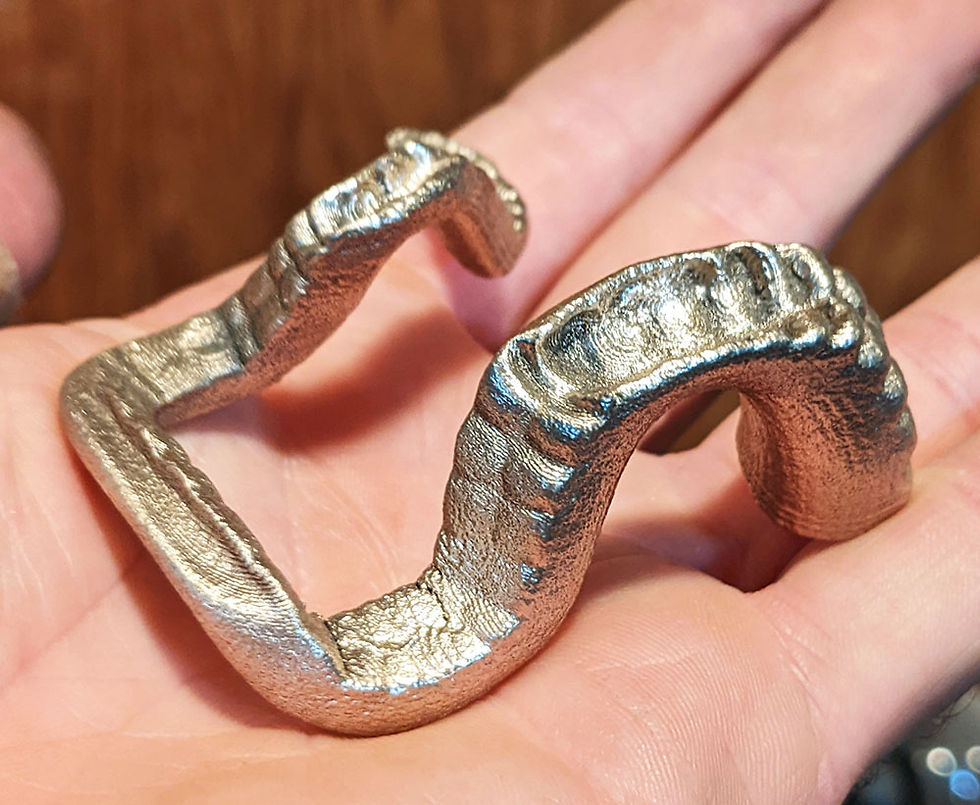A Brief But Informative Breakdown of PET, PETG, and PETT
- gCreate Team
- Oct 11, 2019
- 3 min read
Updated: Oct 17, 2022

What is PET, PET-T, PET-G?
PET (Polyethylene
Terephthalate), PET-G, and PET-T are some of the most common and widely used plastics in the world. Most often, you will see these used in places like the food industry, in things such as plastic bottles and take out containers. The 3D printing industry has adopted these PETs as well and they have quickly become one of the most used and best-selling materials, for good reason. It is an extremely versatile and durable material without the headaches one might expect.

An interesting, commonly misunderstood fact about PETG
The most common of these materials for 3D printing is PETG or Polyethylene Terephthalate Glycol modified. A common misconception is that Glycol is added to the polymerization reaction, but ethylene glycol is already part of the polymerization reaction. Some of the ethylene glycol in the backbone is replaced with cyclohexane dimethanol (CHDM), which changes its properties. Glycol is not added and PETG actually contains less glycol than regular PET. Hackaday did a great, in-depth write up about PETG if you would like to learn more about the chemical properties of PETG.
PETG is an easy to source filament and we often purchase ours from Atomic Filament. The other option is PETT, which is less commonly used in the 3D printing world but was popularized by the filament manufacturer Taulman, who branded it as T-Glas. Taulman was an early adopter of the PET class, and T-Glas became famous for its strength and optical clarity.

When should PET be used?
PETs are incredibly versatile and easy to use filaments. Their strength and rigidity are similar to ABS but with very low warp (although a heated bed is still suggested). This helps make PETs an easy material to work with, something ABS has never been known for. For this reason, we frequently recommend PETG as a drop-in replacement for many applications that would typically require ABS. PETG prints beautifully on our gMax 2 3D printers.
PETs are also often an excellent choice for sustained outdoor use. While a material like PLA will typically start to degrade over time, PETs will better endure extreme conditions and harsh elements over a prolonged periods.
PETG is also one of the only "mainstream" materials that's considered food safe by the FDA! However, using 3D printed PETG products right off the print bed is not recommended because the process of FDM 3D printing leaves layer lines in your prints that can trap bacteria, which can be hard to wash out or remove. If you want to use your PETG 3D prints for food applications, we always suggest coating your food use prints with some type of food-safe epoxy as a precaution.
Excellent strength, clean finish, and ease of printing truly does make PETG great for many applications.
Basic Settings
Nozzle Temp: 235 - 250C
Bed Temp: 55 - 70C
Cooling: 0%
Print Speed: 40 - 55 mm/s
Retraction: 0.8mm - 1.2mm
How to print PETs
Here are a few key points to keep in mind while printing PETs.

PETG can be very "goopy" and stringy, dialing in your Z-Offset can drastically reduce the amount of blobbing and "zits" your PET prints will have. Make sure your nozzle offset is slightly higher than what it would be ordinarily, to help prevent it from scraping on your print, creating blobs.
If a heated bed is not an option, printing on cold glass with a layer of PVA glue stick can work for small to medium parts. We like this purple glue stick from Elmer's (not all purple glue sticks are created equal, by the way).
If you are having trouble obtaining a clean first layer, increase your First Layer temperature by 5-10 Degrees C.
As with printing any material, the environment is critical. Keep your PETs printing in a stable climate away from drafts and ACs.
PETs are known for their optical clarity; one way to achieve high-grade translucent prints is to increase your nozzle size and layer heights. Printing with 1.0mm nozzle, at a 600micron layer height, in spiral vase mode will produce astonishingly transparent prints.

Conclusion
PETG and PETT are gaining popularity rapidly, and for good reason. They take the headache out of printing strong, reliable, and resilient prints, which used to be strictly reserved for expensive, difficult to print materials. Its wide range of applications and affordable price should make it a staple in your filament inventory.







Comments